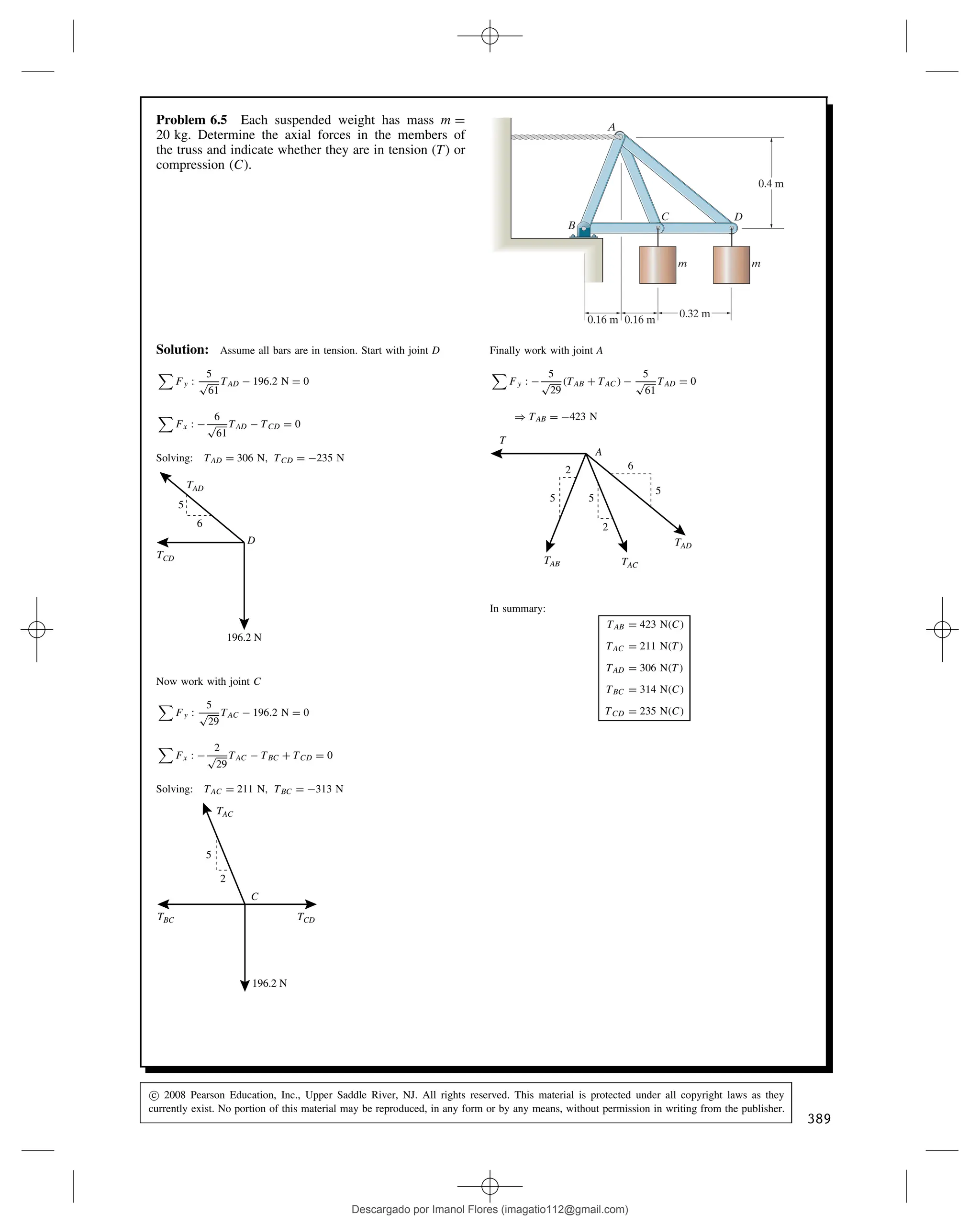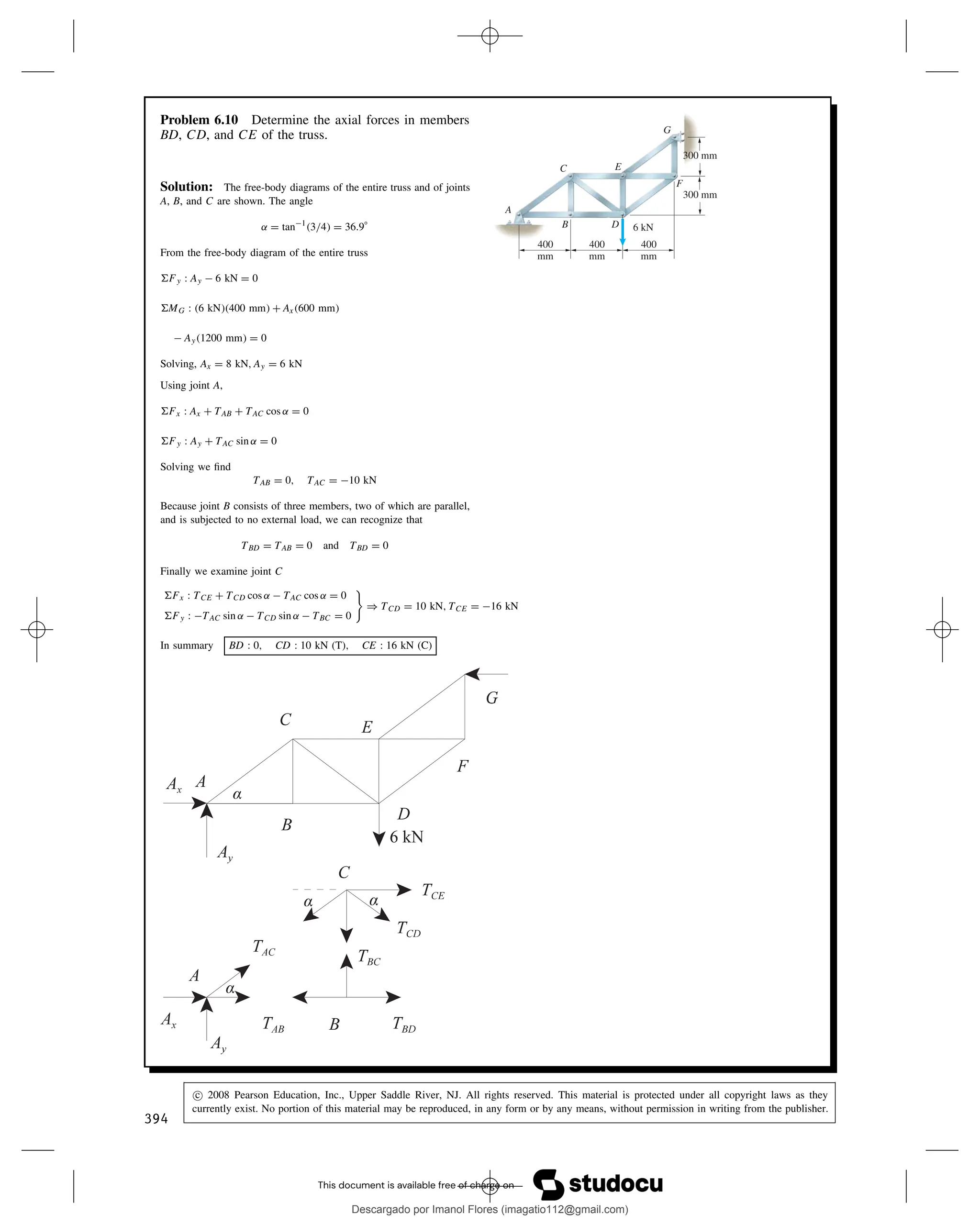This document contains summaries of problems related to determining axial forces in truss members. The problems involve calculating forces based on free body diagrams and equilibrium equations for various truss structures under different loading conditions. The largest tensile force is found to occur in member FBE at 11.74 kips, while the largest compressive force occurs in member FBD at 42.5 kips for the bridge truss shown. Changing the design dimension h of another truss from 0.1m to 0.5m results in significant changes to the forces in members, with the maximum compressive force reducing from 2.78 kips to 1.54 kips.





























































































































